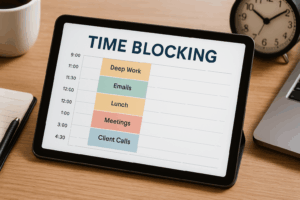Embrace a Healthier You: New Year’s Resolutions for Fitness
As the New Year approaches, many of us set our sights on getting fit and embracing a healthier lifestyle. A common New Year’s resolution is to improve fitness levels and incorporate more physical activity into our daily lives. Whether it’s strength training, jogging, walking, swimming, or other cardiovascular exercises, integrating realistic fitness goals into your daily routine is crucial for long-term success.
The Power of Consistency: Why Fitness Tracking Matters
Achieving long-term health and fitness goals requires more than just sporadic bursts of activity. Consistent fitness tracking and planning are essential components of a successful fitness journey. By regularly monitoring your progress and adjusting your fitness plan as needed, you can ensure that you stay on track and make steady improvements. Setting realistic goals and tracking them effectively can help maintain motivation and prevent burnout.
Streamlining Your Fitness Journey with iStratus
The purpose of this blog is to provide you with practical tips on using iStratus to maintain fitness and health tracking effectively. By integrating your fitness goals into your daily planning with iStratus, you can create a comprehensive fitness routine that fits seamlessly into your lifestyle. From setting SMART goals to tracking various forms of physical activity, iStratus offers tools to help you achieve your fitness aspirations. Let’s explore how you can make the most of this powerful tool to enhance your fitness journey.
Setting Clear Fitness Goals
Identify Your Goals: The SMART Approach
To succeed in your fitness journey, it’s essential to set realistic fitness goals. Using the SMART criteria—specific, Measurable, Achievable, Relevant, and Time-bound—helps ensure your goals are clear and attainable.
-
Specific. Clearly define what you want to achieve. For instance, instead of saying, “I want to get fit,” specify, “I want to jog 5 kilometers without stopping.”
-
Measurable: Ensure your goal can be tracked. For example, “I want to increase my strength training weights by 10% every month.”
-
Achievable: Set realistic goals that challenge you but are still attainable given your current fitness level. For instance, if you’re new to exercise, starting with 15 minutes of walking three times a week is more realistic than aiming for daily 10k runs.
-
Relevant: Your goals should align with your broader fitness and health objectives. If improving cardiovascular health is your aim, activities like jogging, swimming, and walking should be prioritized.
-
Time-bound: Set a deadline to keep you motivated. For example, “I want to be able to swim 20 laps in the pool by the end of three months.”
Short-Term vs. Long-Term Goals
Balancing short-term and long-term goals is crucial for sustained progress. Short-term goals provide immediate milestones that keep you motivated, while long-term goals focus on overall health and fitness improvements.
-
Short-Term Goals: These are stepping stones that help you achieve your larger objectives. For example, a short-term goal could be to incorporate 30 minutes of physical activity, such as walking or strength training, into your daily routine for the next two weeks.
-
Long-Term Goals: These focus on broader outcomes and are set for six months to a year. Examples include running a marathon, achieving a certain weight, or consistently maintaining a daily workout routine that includes strength training and cardiovascular exercises.
Balancing both types of goals ensures that you remain motivated and continue progressing without becoming overwhelmed.
Using iStratus for Goal Setting
iStratus is a powerful tool for setting and tracking your fitness goals, making it easier to stay organized and motivated.
-
Input Goals: Begin by entering your SMART fitness goals into iStratus. You can categorize them into short-term and long-term goals for better clarity.
-
Track Progress: Use the task management features to set daily and weekly tasks related to your fitness routine. For instance, schedule strength training sessions, cardiovascular exercises like jogging or walking, and other physical activities.
-
Adjust as Needed: Regularly review your goals and progress in iStratus. If you notice that a goal is too easy or too challenging, adjust it to ensure it remains realistic and attainable.
-
Notifications and Reminders: Set up notifications and reminders for your workouts and fitness activities. This feature ensures you stay on track and maintain consistency in your fitness plan.
By setting clear, realistic fitness goals and utilizing iStratus to monitor and adjust them, you can create a structured and effective fitness plan that supports your journey toward improved health and fitness.
Daily Planning and Scheduling Workouts
Incorporate Workouts into Your Daily Routine
Integrating physical activity into your daily routine is essential for achieving and maintaining realistic fitness goals. Here are some tips to help you schedule workouts effectively:
-
Consistent Schedule: Aim to exercise at the same time each day. Whether it’s morning, lunchtime, or evening, having a set workout time helps establish a routine. For example, you might choose to go jogging every morning at 7 AM.
-
Start Small: Begin with short, manageable workout sessions, such as 20 minutes of walking or strength training. Gradually increase the duration and intensity as your fitness level improves.
-
Combine Activities: Incorporate different types of physical activities, such as strength training, cardiovascular exercises like jogging, walking, or swimming, to keep your fitness routine diverse and engaging.
-
Plan Ahead: Schedule your workouts for the week in advance. Use iStratus to input these sessions into your daily planner, ensuring you allocate specific times for exercise.
Time Blocking for Fitness
Time blocking is a powerful technique to ensure you dedicate specific times to your workouts, making it easier to stick to your fitness plan. Here’s how to use time blocking in iStratus:
-
Identify Time Slots: Look at your daily schedule and identify available time slots for workouts. These can be in the morning, during lunch breaks, or in the evening.
-
Create Blocks: In iStratus, create time blocks specifically for fitness activities. For example, you might block out 7 AM – 8 AM for a morning jog or strength training session.
-
Prioritize Fitness: Treat these time blocks as non-negotiable appointments. Prioritizing your fitness routine ensures that you make time for physical activity, regardless of how busy your day becomes.
-
Adjust as Needed: Flexibility is key. If something unexpected comes up, adjust your time blocks in iStratus to ensure you still get your workout done at another time.
Setting Reminders and Notifications
Using reminders and notifications in iStratus is an effective way to stay on top of your fitness routine and ensure you never miss a workout session:
-
Set Reminders: For each workout session, set a reminder in iStratus. This can be a notification 30 minutes before your scheduled workout time, prompting you to prepare for your exercise.
-
Use Notifications: Enable notifications in iStratus to receive timely alerts about your scheduled workouts. This feature helps keep you accountable and ensures that your fitness goals remain a priority.
-
Track Compliance: After each workout, mark it as completed in iStratus. Tracking your adherence to your fitness plan can provide a sense of accomplishment and motivate you to maintain consistency.
By incorporating these strategies into your daily planning with iStratus, you can create a structured and effective fitness routine. Time blocking, reminders, and consistent scheduling are essential tools that help integrate physical activity into your life, ensuring you stay on track to achieve your realistic fitness goals.
Tracking Progress and Adjusting Plans
Monitor Your Progress
The Importance of Tracking Progress
Tracking your fitness progress is crucial for maintaining motivation and ensuring that you’re on the right path to achieving your realistic fitness goals. Monitoring progress allows you to:
-
Measure Improvement: By regularly tracking your workouts and physical activity, you can see how much you’ve improved over time. This can include increases in strength training weights, longer jogging distances, or faster swimming times.
-
Stay Motivated: Seeing tangible progress helps keep you motivated and committed to your fitness routine. It provides a sense of accomplishment and encourages you to continue pushing towards your goals.
-
Identify Plateaus: Tracking allows you to spot plateaus in your fitness journey. If your progress stalls, it’s a sign that you may need to adjust your workout plan or try new exercises.
-
Make Informed Adjustments: By understanding what’s working and what isn’t, you can make data-driven decisions to adjust your fitness plan and overcome any obstacles.
Using iStratus for Progress Tracking
How to Log Workouts, Track Progress, and Review Fitness Data
iStratus offers powerful tools to help you log your workouts, track your progress, and review your fitness data:
-
Log Workouts: After each workout session, log your activity in iStratus. Include details such as the type of exercise (e.g., strength training, jogging, walking, swimming), duration, intensity, and any specific notes about the session.
-
Track Progress: Use iStratus’s progress tracking features to monitor your fitness journey. This can include tracking the number of workouts completed each week, total time spent exercising, or improvements in specific exercises.
-
Review Fitness Data: Regularly review your fitness data in iStratus. The platform offers visual reports and graphs that provide an overview of your progress over time. This helps you identify trends and areas for improvement.
Adjusting Goals and Plans
Tips for Adjusting Fitness Goals and Workout Plans Based on Progress Tracked in iStratus
As you track your progress, you may find it necessary to adjust your fitness goals and workout plans to stay aligned with your evolving fitness level and objectives:
-
Reevaluate Your Goals: Periodically reassess your realistic fitness goals using the SMART criteria. If you’ve achieved a short-term goal, set a new one that builds on your progress. For example, if you’ve met your goal of jogging 5 kilometers, aim for 10 kilometers next.
-
Adjust Workout Intensity: Based on your progress data, you might need to increase or decrease the intensity of your workouts. If you’re consistently meeting your strength training targets, consider increasing the weights or adding more repetitions.
-
Incorporate New Activities: To prevent boredom and overcome plateaus, integrate new physical activities into your fitness plan. This can include different forms of cardiovascular exercises like swimming, cycling, or new strength training routines.
-
Modify Your Schedule: If you find that certain times of day are more effective for your workouts, adjust your daily planning in iStratus accordingly. This flexibility helps you maintain consistency and make the most of your exercise sessions.
By leveraging the tracking and progress features of iStratus, you can ensure that your fitness journey remains dynamic and responsive to your needs. Regularly monitoring your progress and making informed adjustments to your fitness plan will help you stay motivated, overcome challenges, and achieve your fitness goals.
Integrating Nutrition and Wellness
Importance of Nutrition
The Role of Nutrition in Achieving Fitness Goals
Nutrition plays a crucial role in your fitness journey, complementing your exercise routine and helping you achieve your realistic fitness goals. Proper nutrition provides the energy needed for physical activity, aids in muscle recovery, and supports overall health. Here are key aspects to consider:
-
Balanced Diet: Consuming a balanced diet with the right proportions of carbohydrates, proteins, fats, vitamins, and minerals is essential for optimal performance and recovery.
-
Hydration: Staying hydrated is critical for maintaining energy levels, regulating body temperature, and promoting efficient muscle function.
-
Pre- and Post-Workout Nutrition: Eating the right foods before and after workouts can enhance performance and recovery. Pre-workout meals should provide energy, while post-workout meals should focus on muscle repair and replenishment of glycogen stores.
Meal Planning with iStratus
Tips for Using iStratus to Plan and Track Meals and Nutrition
iStratus can be a valuable tool for meal planning and tracking your nutrition, ensuring you stay on top of your dietary goals:
-
Create Meal Plans: Use iStratus to create weekly meal plans. Schedule your meals just like you would schedule your workouts, ensuring you have a balanced diet that supports your fitness goals.
-
Log Meals: Track what you eat by logging your meals in iStratus. Include details such as portion sizes, nutritional content, and the timing of your meals.
-
Set Nutrition Goals: Set specific nutrition goals within iStratus, such as daily caloric intake, macronutrient distribution, and hydration targets. Regularly review your logs to ensure you are meeting these goals.
-
Grocery Lists: Create grocery lists in iStratus based on your meal plans. This helps ensure you have all the ingredients you need to prepare healthy meals and avoid last-minute unhealthy choices.
Wellness Tracking
How to Use iStratus to Monitor Other Aspects of Wellness
Beyond fitness and nutrition, overall wellness includes several other aspects such as sleep, hydration, and mental health. iStratus provides tools to help you monitor and improve these critical areas:
-
Sleep Tracking: Log your sleep patterns in iStratus to ensure you are getting enough rest. Track the duration and quality of your sleep and identify any patterns or issues that need addressing.
-
Hydration Monitoring: Keep track of your water intake to ensure you stay hydrated. Set daily hydration goals and use reminders in iStratus to prompt you to drink water throughout the day.
-
Mental Health: Monitor your mental health by tracking your mood, stress levels, and other mental health indicators in iStratus. This can help you identify triggers and patterns, allowing you to take proactive steps to improve your mental well-being.
By integrating nutrition and wellness tracking into your daily planning with iStratus, you can create a holistic approach to health and fitness. Proper nutrition, consistent meal planning, and comprehensive wellness tracking are essential components that work together to help you achieve and maintain your fitness goals.
Key Takeaways: What We’ve Learned
In this blog, we explored how to integrate fitness goals into your daily planning using iStratus. We began by emphasizing the importance of setting realistic fitness goals and using the SMART criteria to define them clearly. We then discussed the significance of incorporating workouts into your daily routine and how time blocking in iStratus can help you stay consistent.
We also covered the crucial role of tracking progress and adjusting plans, highlighting how iStratus can log workouts and track your fitness journey. Additionally, we delved into the importance of nutrition and wellness, and how iStratus can be used for meal planning and monitoring overall wellness aspects such as sleep, hydration, and mental health. Finally, we explored leveraging iStratus’s advanced features, including customizable templates, integration with other apps, and data analysis, to optimize your fitness routine.
Stay Motivated: Integrate Fitness Goals with iStratus
We encourage you to take the next step in your fitness journey by integrating your fitness goals into your daily planning with iStratus. By utilizing its powerful features, you can create a structured, efficient, and personalized fitness plan that aligns with your lifestyle and helps you achieve your fitness aspirations. Consistency, planning, and tracking are key to long-term success, and iStratus provides the tools you need to stay on track.
Start Your Journey with iStratus Today
Take control of your fitness and wellness by incorporating iStratus into your daily planning. Whether you’re setting new fitness goals, tracking progress, or integrating nutrition and wellness, iStratus can help you achieve a healthier and more balanced life. Make this New Year the start of a successful fitness journey with iStratus.
Additional Resources
Explore iStratus
To learn more about iStratus and how it can help you integrate your fitness goals into your daily planning, check out the following links:
Further Reading
Enhance your understanding of fitness goal setting, tracking, and planning with these recommended articles, books, and resources:
Support and Community
For additional help and advice on using iStratus for fitness planning, join support forums and community groups. Engage with other users, share tips, and get answers to your questions from experts and peers.
These resources will provide you with the tools, knowledge, and support you need to maximize the benefits of using iStratus for your fitness planning and tracking.









